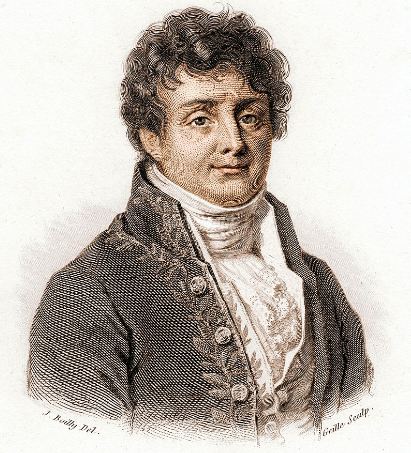Joseph Fourier was born in 1768 and was a French mathematician and physicist. He was best known for initiating the investigation of the Fourier series that later developed into harmonic analysis and Fourier analysis. The application of these series was also used for heat transfer and vibration problems.
Another significant achievement of his was the discovery of the greenhouse effect. Even though Joseph as compared to other 18th century scientists had relatively fewer achievements but they were important enough for the future. Let’s take a look.
Biography
Fourier was born in Auxerre to a tailor. He became an orphan at the age of nine and was recommended to the Bishop of Auxerre, which enabled him to get educated by the Benedictine Order of the Convent of St. Mark.
At the time, the commissions in the scientific corps of the army were reserved for those of good birth and therefore, Joseph accepted a military lectureship in mathematics. He was a member of the local Revolutionary Committee and played a huge role in promoting the French Revolution.
Joseph accompanied Napoleon Bonaparte during his visit to Egypt in 1798 as a scientific adviser and was appointed the secretary of the Institut of Egypte. Since the British fleet at the time had cut off France, Joseph built workshops that allowed the French to rely on war munitions.
In addition to that, Joseph also contributed some mathematical papers to the Napoleon founded Egyptian Institute. The intention was to weaken the British influence in the East. Upon the British victories and the French capitulation in 1801, Fourier returned to France.
The same year, Fourier was appointed the Prefect of the Department of Isere in Grenoble by Napoleon where he oversaw the construction of road projects. Initially, Fourier had returned to France after Napoleon’s expedition to Egypt to resume his academic post as a professor but Napoleon had a different idea for him.
Since Joseph respected Napoleon, he accepted the offer and began experimenting on heat propagation. The year 1807 saw Joseph presenting a paper to the Paris Institute titled “On the Propagation of Heat in Solid Bodies”.
Then, in 1822 after Jean Baptiste Joseph Delambre was no more the Permanent Secretary of the French Academy of Sciences, it was Joseph Fourier who succeeded him. After a few years in 1830, he was elected as a member of the Royal Swedish Academy of Sciences.
The same year, Joseph’s health began to take its toll. He regularly experienced aneurism of the heart in Egypt and Grenoble. However, a fall in 1830 proved to be the worst while Joseph descended a flight of stairs, leading to damage way beyond his fear and expectancy. Soon after the event, he passed away the very same year.
The Analytic Theory of Heat
In 1822, Jean-Joseph Fourier published his work on the heat in Theorie analytique de la Chaleur. The work featured reasoning behind Newton’s law of cooling. According to Joseph Fourier Theorie, the flow of heat between two adjacent molecules is proportional to the extremely small difference in their temperatures. Later, the book was translated and editorial corrections were done 56 years later by Freeman.
The book not only contained information about heat flow but also other contributions featuring one purely mathematical and two essentially physical. Fourier stated that any function of a variable whether continuous or discontinuous can be expanded in a series of sines of multiples of the variable.
Although without additional conditions, this result is not accurate but according to Fourier’s observation, some discontinuous functions being the sum of infinite series is a breakthrough.
Another important physical contribution to the book was the concept of dimensional homogeneity in equations. He also made important contributions to dimensional analysis. Apart from that, Fourier’s proposal of the partial differential equation was another physical contribution to heat diffusion. Today, every mathematical physics student is taught this equation.
Discovery of the Greenhouse Effect
The Joseph Fourier Greenhouse Effect was a famous discovery leading him straight to the history books. In the 1820s, Joseph Fourier calculated that an object of the Earth’s size at its distance from the Sun should be considerably colder than the planet actually if it is only warmed by the effects of the incoming solar radiation.
He published some articles in 1824 and 1827 that featured his observations of additional heat particles. According to Fourier, the interstellar radiation might be responsible for the large portion of additional warmth, and that the possibility that the atmosphere of the Earth might act as an Insulator of some kind was widely accepted as the first proposal of what we call the Greenhouse effect but Joseph never called it that.
Final Word
Despite the fact that Joseph Fourier’s scientific career was cut short due to his health condition but he managed to publish some important work still relevant to this day. For instance, the greenhouse effect has turned into a global phenomenon and the partial differential equation is taught to every mathematical physics student.
Concluding, Joseph Fourier laid the foundation of many important concepts that we hear and learn today. Making him an important figure in the world of science.
